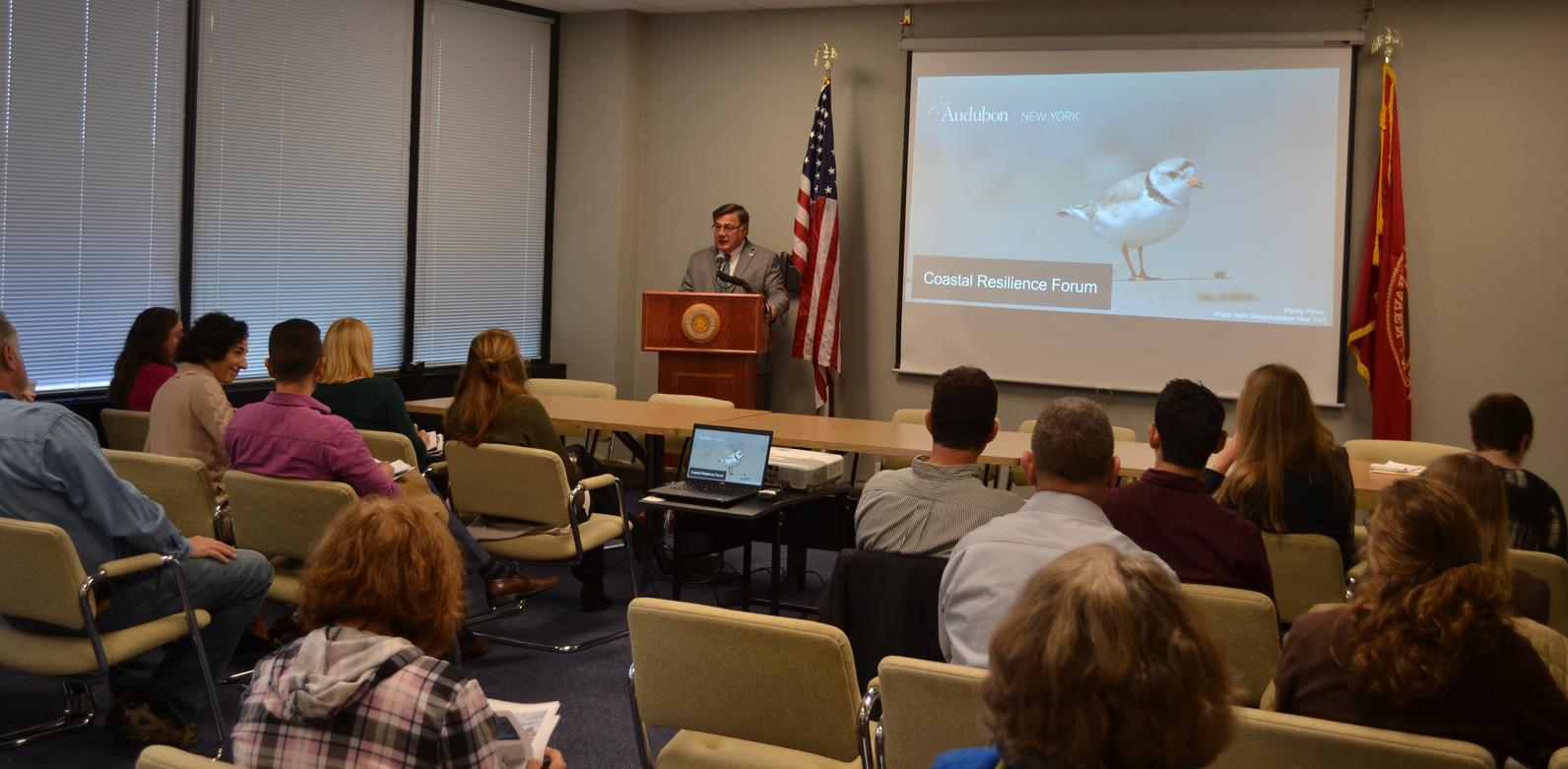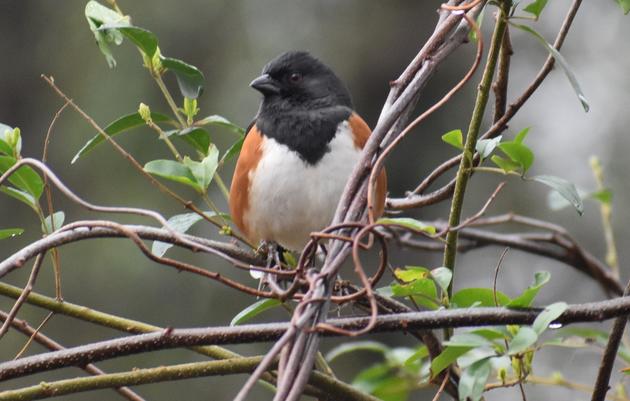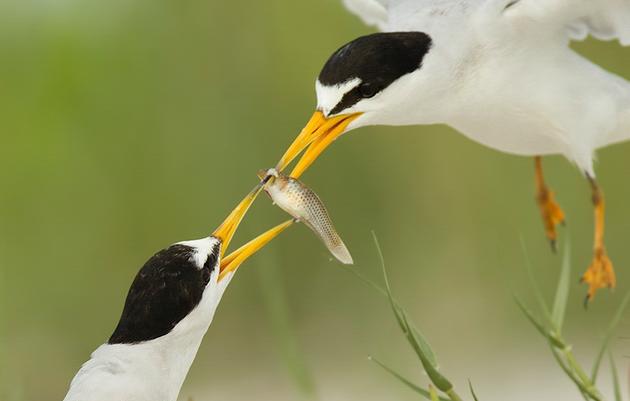Our coastlines don’t sit still, so neither can we.
(October 11, 2019) - Last week, Audubon New York and partners hosted a coastal resilience event, with panelists including Jillian Liner, Director of Conservation, Audubon New York; Nicole Maher, Ph.D., Senior Coastal Scientist, The Nature Conservancy; Alexa Fournier, Coastal Resilience Specialist, NYS Department of Environmental Conservation; and, John Turner, Land Management Specialist, Town of Brookhaven.
Over thirty-five people attended the event where participants addressed the importance of salt marsh as a natural solution to increasing coastal resiliency, possible challenges, and the need for policy action.
Audubon staff and representatives from four local Audubon chapters were joined by Assemblyman Englebright; representatives from Congressman Suozzi and Senator Gillibrand’s offices; Brookhaven Town Supervisor Edward Romaine; Alexcy Romero, Superintendent of Fire Island National Seashore; and representatives from the U.S. Army Corps of Engineers, New York State Parks; and other conservation partners.

Many priority bird species depend on salt marsh habitat and are threatened by climate change. The Saltmarsh Sparrow population is drastically declining at a rate of 9% per year and it could collapse within 50 years. To conserve coastal habitat for birds and other wildlife and to protect coastal communities, action is needed on the federal, state and local level.
Though some Long Island communities are working to improve the resiliency of their coastlines, there is still work to be done. Additional funding for restoration, consistent monitoring to measure success, and facilitating marsh migration have been identified as major needs.
Additionally, Audubon supports policies like the Coastal Barrier Resources Act (CBRA), which helps protect coastal habitat from development, and saves federal tax dollars by restricting Federal expenditures and flood insurance within designated areas. The U.S. Fish and Wildlife Service has proposed to add 277,000 acres within nine Atlantic States, including New York, to the CBRA System and Congress is expected to review the proposed changes in early 2020. Audubon members can help ensure that the updated CBRA maps are approved by expressing their support for adding additional areas to the system in the coming months.
There is still hope for species like the Saltmarsh Sparrow but we need to act now. Audubon looks forward to working with partners to restore, enhance, and protect critical salt marsh habitat on Long Island.
To learn more about the fate of our coasts and what we can do to make them more resilient, watch the Coastal Resilience video below, recently produced by Audubon and The Cornell Lab of Ornithology with funding provided by the Schumann Foundation.







